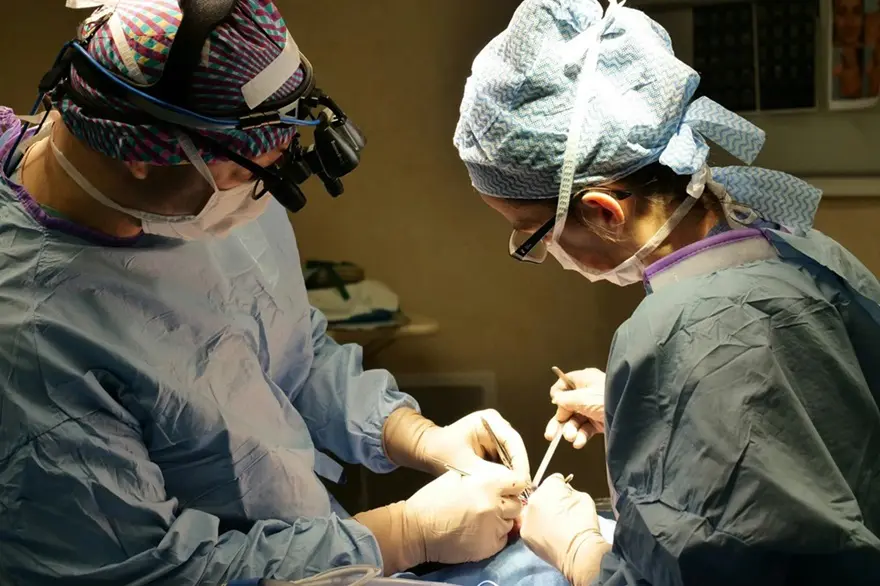Cosmetic Surgery
The History of Plastic Surgery
Today, when you think of plastic surgery, the image that immediately comes to mind is that of cosmetic tweaks: a touch of Botox, lip filler, or a nose job. But its foundation runs deeper than aesthetics. Before the era of red carpets and celebrity surgeons, plastic surgery was a healing art, helping people recover from injuries, birth defects or the tragedies of war. Indeed, several of the earliest recorded forms of surgery were developed millennia ago, indicating that the quest to repair function and form is not a new phenomenon.

After all, plastic surgery has evolved in tandem with medical science. From ancient Indian skin grafts to Renaissance musings on the reconstruction of the nose, each generation contributed its own tools, ideas, and motivations to move forward. By the twentieth century, the ravages of two world wars had produced pioneering reconstructive techniques. Now, advances in science and materials make these treatments safer, better, and more accessible than at any other time.
Whether it is reconstructive or cosmetic, plastic surgery is now a meaningful part of many people’s lives, restoring their confidence, enhancing their health, and even making them feel more at home in their bodies. Here, we look back at how it all began, how it evolved, and examine the ongoing impact of plastic surgery’s history, which continues to influence its future.
Ancient Origins of Plastic Surgery
Plastic surgery was not always a medical speciality; for centuries, like everything from dentistry to butchery, it was considered a trade. Among the earliest evidence is the record of nose surgery in ancient Egypt, which dates back to approximately 2500-3000 BC, as described in detail on the Edwin Smith Papyrus. This ancient papyrus document also addresses other medical issues. These early surgeries were presumably felt to be necessary to repair the nose following injury or punishment, emphasising how integral the nose has been to identity and appearance.
Now, let’s head east to ancient India, between 600 and 500 BC, where things start to get really interesting. Indian surgeons had also developed surprisingly sophisticated techniques for the time, including skin grafts and skin flaps, to reconstruct noses and other facial parts. These weren’t merely cosmetic procedures for those who had endured trauma or punishment; they were life-saving. Sushruta, an ancient Indian physician, is known to have detailed such surgical procedures in his texts, for which he is referred to as the “father of plastic surgery”.
In ancient Rome, the pendulum of attention swung slightly toward reconstructive surgery on soldiers’ battle injuries. One of the earliest known mentions of some of the advanced medical practices of the time was written by the Roman medical writer Cornelius Celsus in the first century AD in his work De Medicina. Romans performed elementary plastic surgery procedures, predominantly on battle wounds, and their work was of such significance that it was cited for more than 1,700 years. This early pragmatic manoeuvre established the principles of surgery as we know them today.
These early discoveries, however different by today’s high-tech standards, set a solid foundation. It’s remarkable to think that thousands of years ago, people were already combining their talents and ingenuity to heal and transform, a true hybrid of art and medicine.
Developments in the Middle Ages and the Renaissance
After ancient times and their early contributions, plastic surgery actually experienced a bit of a lull in progress during the Middle Ages. It was not because interest flagged, but rather the dissemination of religious beliefs and social attitudes often curbed surgical investigation. Most medical treatment was strictly regulated, and the practice of surgery was itself risky and was sometimes taboo. Even under these adverse conditions, some progress was being quietly, though perhaps slowly, made, particularly in the case of injuries, whether they were due to warfare or accidents.
A prominent figure from the late Middle Ages is Henri de Mondeville, known as the French surgeon who made significant contributions to nasal reconstruction. He improved operations by using skin flaps to close wounds, a skill that would prove crucial to future plastic surgery. His work suggested a bit more about how to bring not just form but also function back to life.
The Renaissance, a period of renewed interest in science and the human body, ushered in more innovation. Gaspare Tagliacozzi, from Italy, pioneered the widely adopted technique of nasal reconstruction, using a graft of skin from the upper arm to rebuild noses, known as the “Italian method.” In addition to outlining the technique, Tagliacozzi offered insights into why and how it worked, marrying art and science in a manner that would galvanise surgeons for generations to come.
These centuries serve as a reminder that progress may seem slow at times. Still, the passion and curiosity of a few dedicated individuals continue to propel medicine forward, clearing the way for the leaps that would follow.
Plastic Surgery in the 19th and Early 20th Centuries — The Birth of Modern Plastic Surgery
Plastic surgery entered the modern era in the 19th and early 20th centuries as the discipline evolved from a limited set of techniques, performed by a small number of doctors, to a comprehensive field of medicine. The introduction of anaesthesia and advancements in antiseptics, along with increased knowledge of human anatomy, stimulated progress in surgical techniques. These advances enabled more complicated and safer operations.
But perhaps nothing hastened plastic surgery like the horrific injuries of World War I: Soldiers came home with horrific facial wounds, and there was an urgent call for reconstructive techniques. Enter Sir Harold Gillies, widely regarded as the father of modern plastic surgery. He helped pioneer extraordinary treatments for war injuries by melding surgical prowess with artistic vision. Gillies was not just reconstructing faces; he was restoring hope and dignity to the war-wounded in their thousands. His developments formed the basis of contemporary plastic surgery.
Meanwhile, on the other side of the Atlantic, the rise of Hollywood was giving cosmetic surgery a fresh focus. A film industry fixation on perfect appearance also contributed to the popularisation of procedures that improved looks more than they did functionality. Stars emerged as beauty symbols, and plastic surgery began to seep into the broader culture, influencing notions of self-image and glamour. This cultural shift normalised cosmetic work, laying the groundwork for today’s surge in procedures.
Together, these changes helped to elevate plastic surgery from a niche craft to a respected and dynamically evolving medical speciality, one that still manages to meld science, art, and human stories.
Modern Era: Innovations and Global Growth
Since the mid-20th century, plastic surgery has begun to move in exciting new directions. More than just replacing lost parts or disfigured features, it came to emphasise appearance, reflecting shifts in cultural mores and the growing demand for beauty. It was now possible, thanks to advances in medical technology, which brought a safer, more effective, and less invasive option to your doorstep.
Another milestone emerged in the 1960s, when Dr. Thomas Cronin developed silicone breast implants. The invention revolutionised the field of cosmetic surgery by offering women a new option for body sculpting and personal style. Although it was controversial and needed to be refined in terms of safety and design for several years, breast augmentation helped establish aesthetic surgery as a legitimate part of surgery.
The invention of laser technology, meanwhile, revolutionised skin care. The lasers enabled surgeons and dermatologists to operate more precisely and with less trauma, leading to shorter recovery times and lower risks. This advancement opened the doors for several minimally invasive treatments, including wrinkle reduction and scar revision, that presented the cosmetic option of pods to the public in a more approachable manner.
Other advances, including better sutures, improved anaesthesia, and more precise imaging, furthered the possibilities of what plastic surgery could accomplish. Additionally, wealth and media influence have contributed to the global spread of cosmetic surgeries. Hundreds of millions are now enhancing reconstructive surgery, if you could call it that, for personal empowerment and increased confidence.
Ultimately, plastic surgery today is a blend of the most advanced scientific research, artistic flair, and cultural influence, adapting to meet the wants and demands of people both here and abroad. It’s a trip as much about people’s stories as it is about medical advances.
Conclusion
Plastic surgery dates back thousands of years, and the transformations are truly remarkable. From the earliest days of reconstructive procedures in ancient Egypt and India to the innovative work of surgeons in Renaissance Europe, each successive age built upon what had come before, stretching the limits of the possible and refining the techniques crafted by earlier generations through sometimes extreme advancements.
The trauma of the world wars brought reconstructive surgery into new clarity, with Harold Gillies and others inventing life-altering techniques for wounded soldiers. Later, the advent of Hollywood glamour and changing beauty ideals began to propel plastic surgery into the cosmetic realm, as individuals increasingly requested procedures not just to heal, but to improve.
Plastic surgery has never been more advanced, accessible, or diverse than it is today. New materials, better tools, and less invasive procedures have kept the field changing, along with the public’s attitude, which has become more open and accepting. Whether to restore confidence after an accident or enhance the quality of life, plastic surgery has a profoundly positive impact on lives around the globe these days.
Ultimately, the story of plastic surgery is one of elasticity, reinvention, and human connection. A fusion of science and art, and of the constant desire to look and feel like the best version of ourselves.







